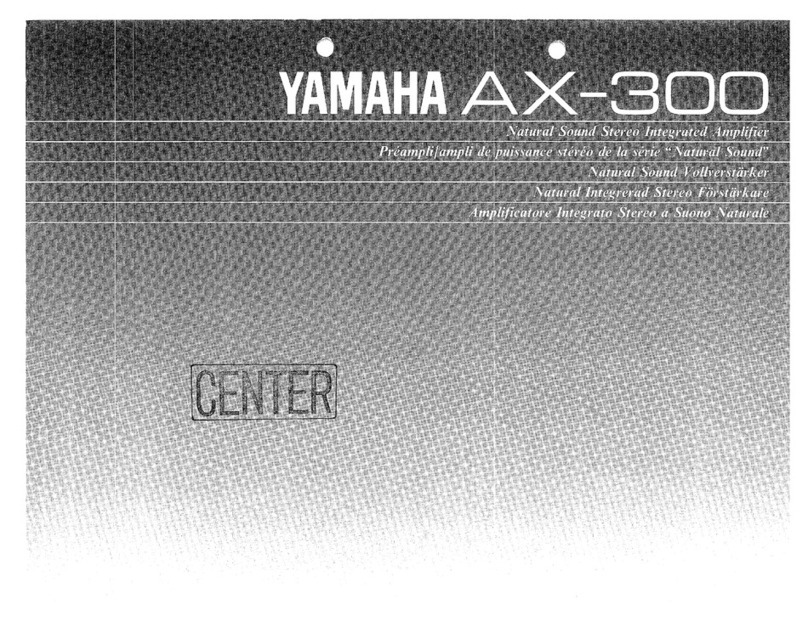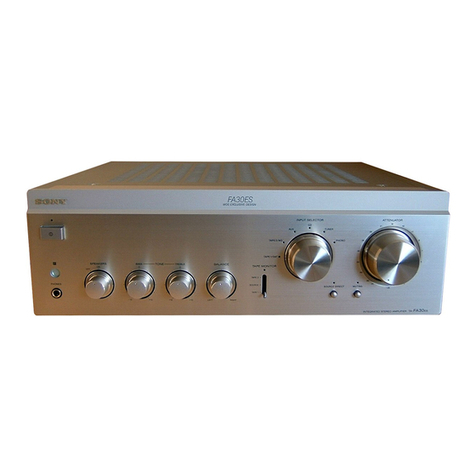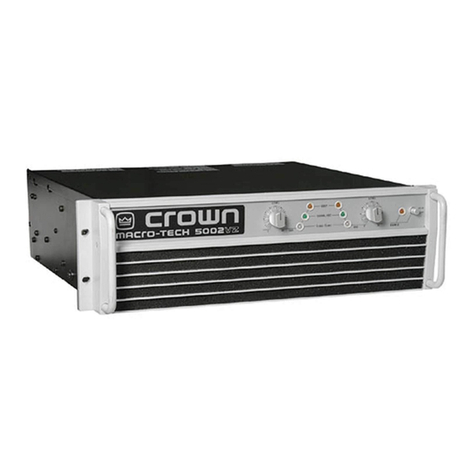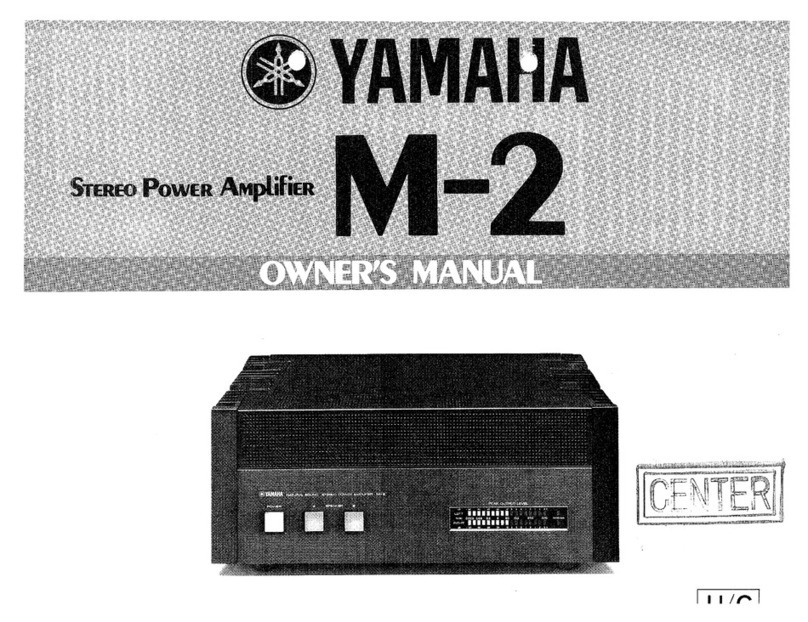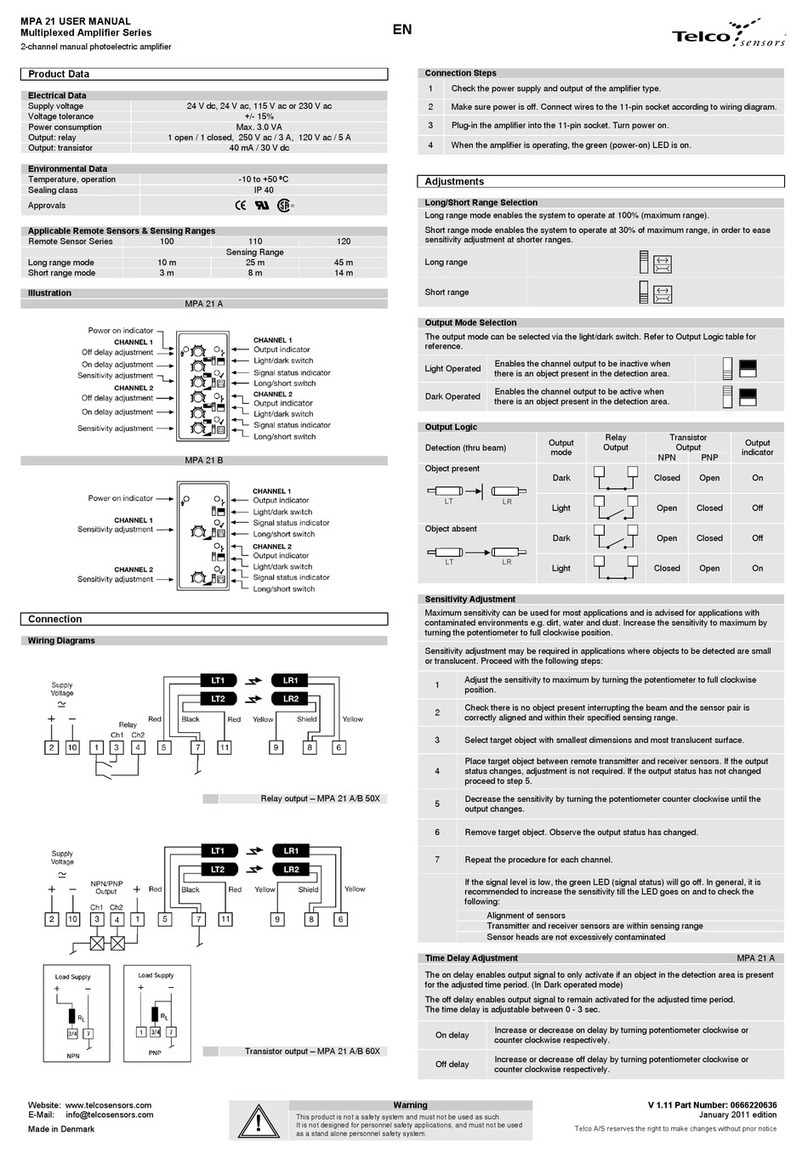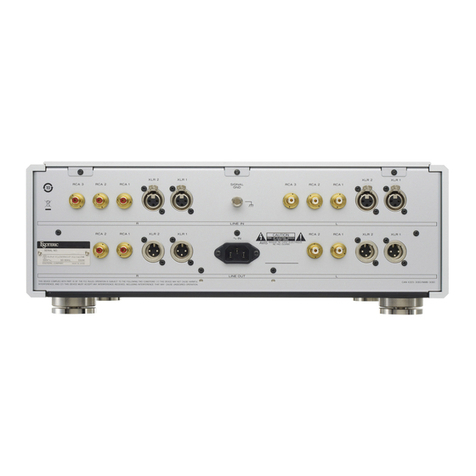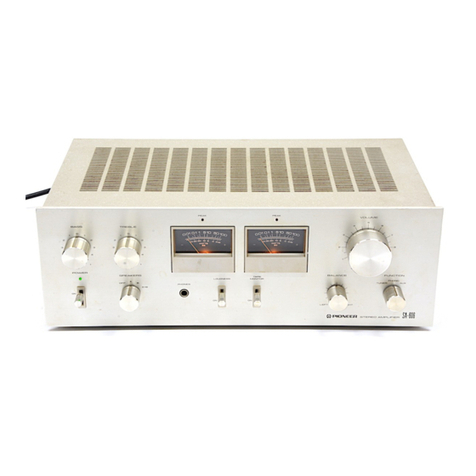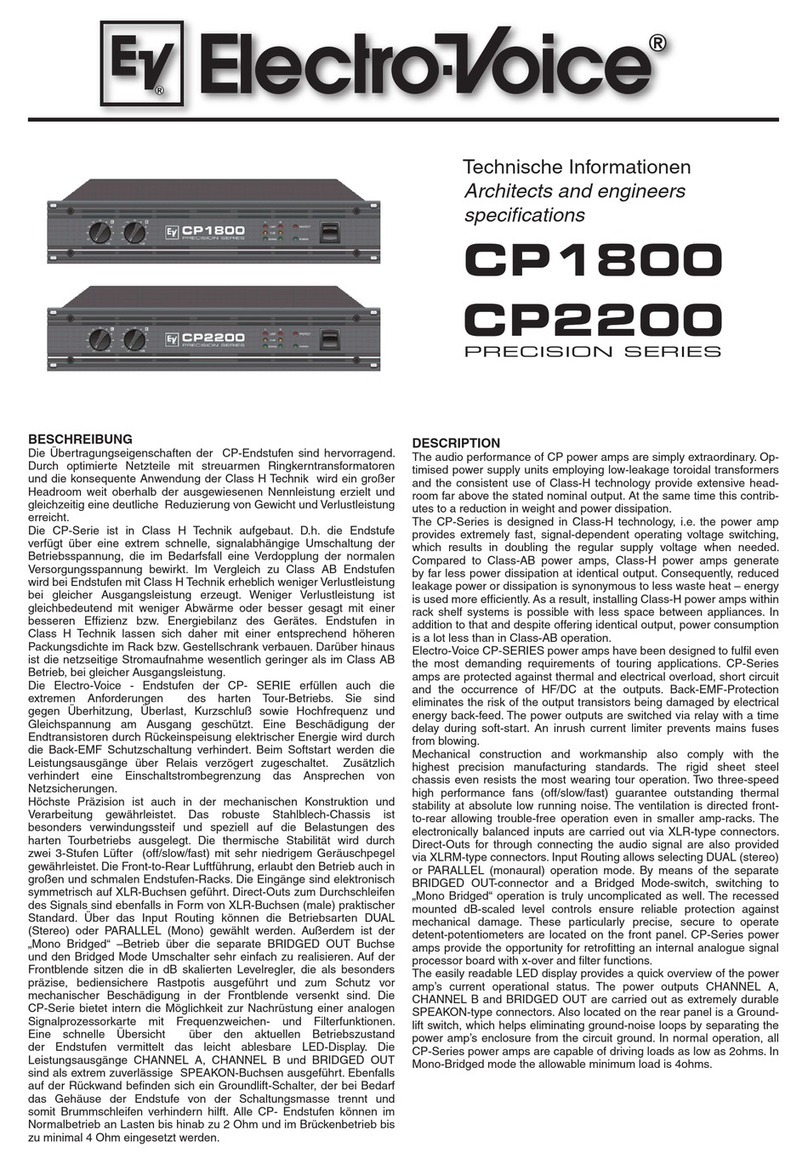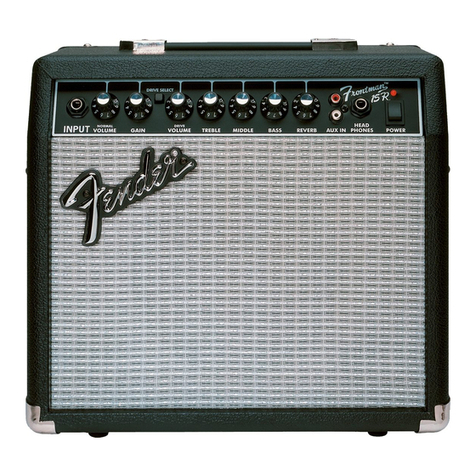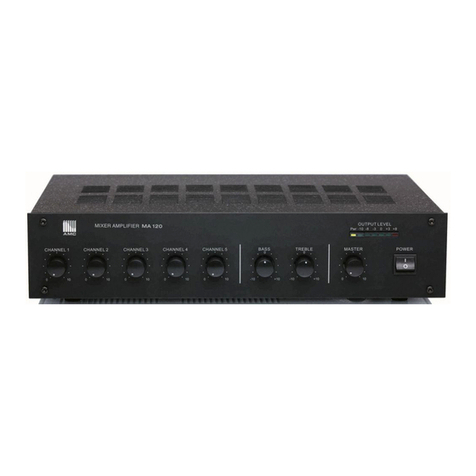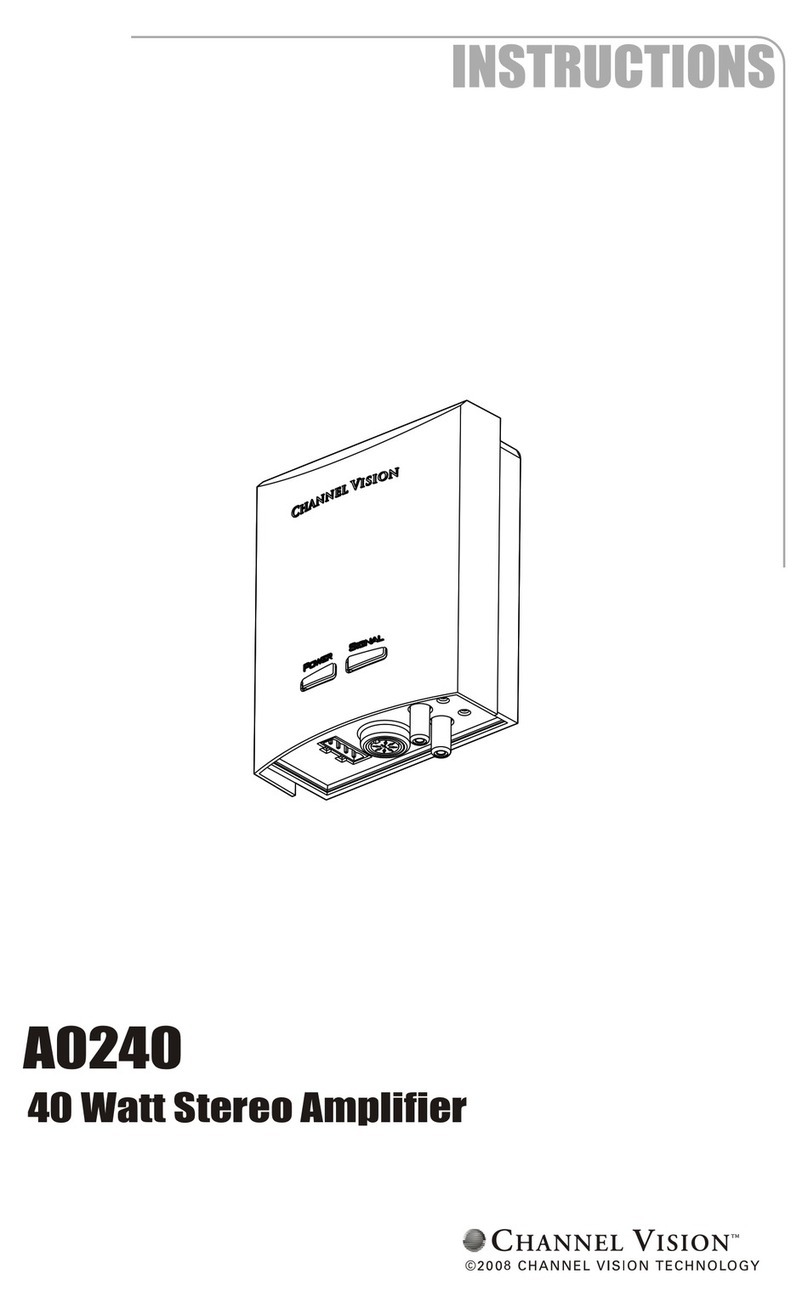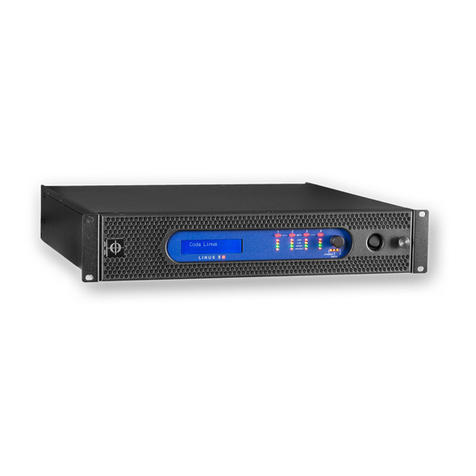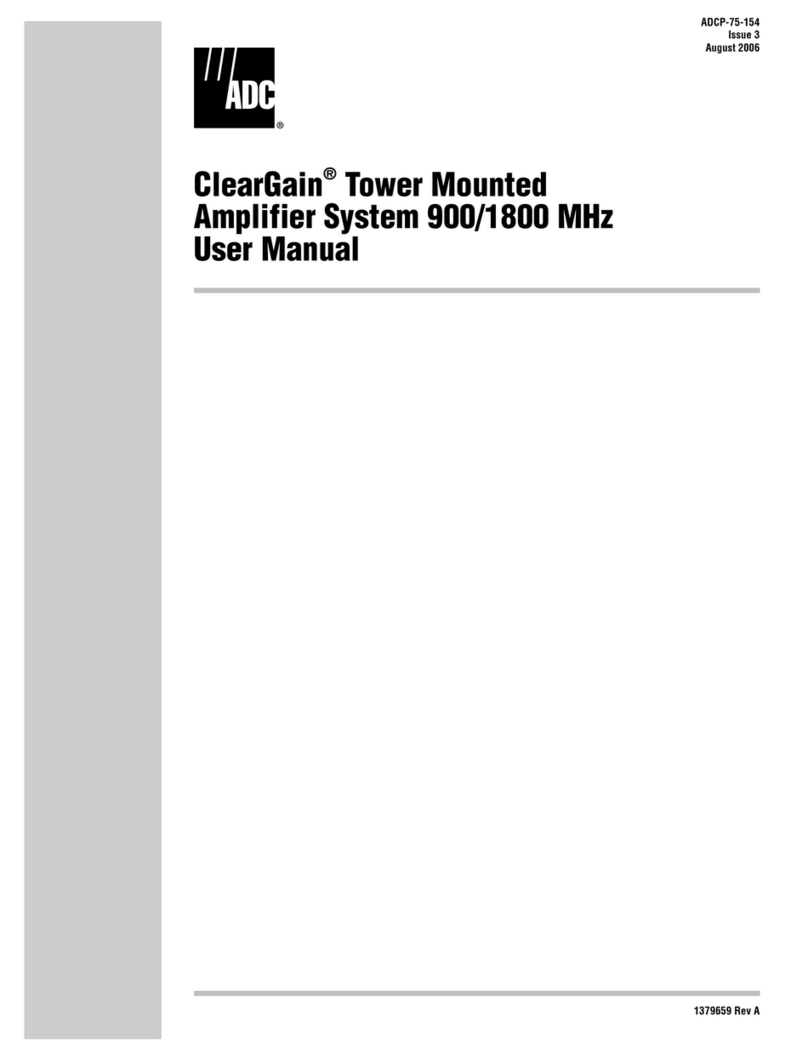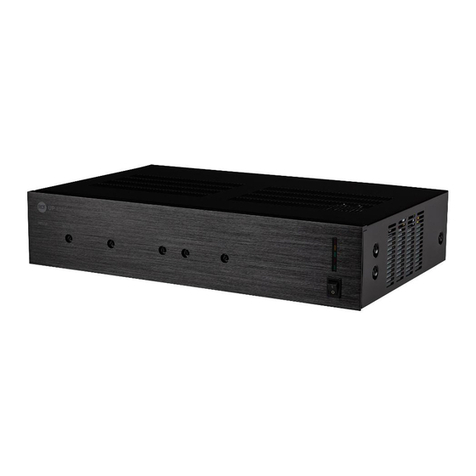HCFA TX2N-4AD-PT User manual

+11,120
-148°F
-1,480 +1,112°F
Digital
output
Temp.input°F
+6,000
-100℃
-1,000 +600℃
Digital
output
Temp.input℃
1 2 3
This manual contains texts, diagrams and explanations which will guide the reader in the
correct installation and operation of TX2N-4AD-PT. This manual should be read and
understood carefully before attempting to install or use the unit.
1. Introduction
• The TX2N-4AD-PT analog block amplifies the input from four platinum temperature
sensors (Pt 100, 3 wire, 100 Ω) and converts the data into 12 bit reading’s stored in the
main unit. Both Centigrade (°C) and Fahrenheit (°F) can be read. Reading resolution is 0.2°C
to 0.3°C / 0.36°F to 0.54°F.
• The TX2N-4AD-PT can connected to the LX1N/HCA2/HCA5/TX3U/HCA8/HCA8C series
Programmable Controllers (PLC).
• All data transfers and parameter setups are adjusted via software control of the TX2N-
4AD-PT; by use of the TO/FROM applied instructions in the PLC.
• The TX2N-4AD-PT occupies 8 I/O points on the PLC expansion bus. The 8 I/O points can
be allocated from either inputs or outputs. The TX2N-4AD-PT draws 30mA from the 5V rail
of the main unit or powered extension unit.
2. External dimensions
Weight: Approx. 0.3 kg (0.66 lbs) Dimensions: mm (inches)
3. Connection with PLC
TX2N-4AD-PT User’s Manual
3.1 Connection with PLC
The TX2N-4AD-PT unit can be connected to the PLCs as follows. Restrictions apply to the
maximum number of connectable units, depending on the DC24V/DC5V Power Supply
capacities and the Main Unit/ Special Function Unit types. For details, refer to the respective
PLC manual.
HCA5/HCA8/TX3U : The maximum connectable units is 8.
HCA8C*1 : The maximum connectable units is 8.
To connect the TX2N-4AD-PT with the HCA8C main unit, HCA8C-CNV5V
-TX2N is required.
LX1N/HCA2 : The maximum connectable units is 8.
*1 Up to 7 units can be connected to an HCA8C-16X16YT PLC.
3.2 Special function block numbers
Other special units of blocks that use FROM/TO instructions, such as analog input blocks,
analog output blocks and high-speed counter blocks, can be directly connected to the main
unit of the PLC or to the right side of other extension blocks or units.
4. Wiring
4.1 Wiring
The cable of the Pt 100 sensor or a twisted shielded
cable should be used for the analog input cable. This
analog input cable should be wired separately from
power lines or any other lines which may induce noise.
The three wire method improves the accuracy of the
sensors by compensating voltage drops.
If there is electrical noise, connect the FG (frame
ground) terminal with the ground terminal. (In CH1,
there is no FG terminal. Use FG terminal of other
channels.
Connect the ground terminal on the TX2N-4AD-PT
unit with the grounded terminal on the main unit. Use
grounding on the main unit, if grounding is possible.
Either an external or the 24V built-in supply in the PLC
may be used.
4.2 Using crimp terminations
Wire only to the module terminals discussed in this
manual. Leave all others vacant.
Secure the terminal using a tightening torque of
between 0.5 and 0.8N·m.
Use crimp terminals as indicated on the left.
5. Installation notes and usage
5.1 General specification
500V AC, 1min (between all terminals and ground)
Item Specification
General specifications Same as those for the main unit
Dielectric withstand voltage
5.2 Power supply specification
5V DC, 30mA (internal power supply from the main unit)
Item Specification
Analog circuits 24V DC ± 10%, 50mA
Digital circuits
5.3 Performance specification
Analog Inputs
Item Centigrade Fahrenheit
Both °C and °F are available by reading the appropriate buffer memory (BFM).
Analog input
signal
Platinum Temperature Pt 100 sensors (100 Ω), 3-wire, 4-channel
(CH1, CH2, CH3, CH4), (DIN 43760, JIS C 1604-1997, JIS C 1604-1981)
Current to sensor
1 mA. sensor: 100 ΩPt 100
Conversion
Characteristics
Miscellaneous
The block occupies 8 I/O points
(can be either inputs or outputs)
Item Specification
Isolation
Photo-coupler isolation between analog and digital circuits.
DC/DC converter isolation of power from the main unit.
No isolation between analog channels
Number of occupied I/O points
6. Allocation of buffer memories (BFM)
6.1 Buffer memories
BFM CONTENTS
*#0
*#1 - #4
*#28
#29
#30
#31
#5 - #8
#9 - #12
#13 - #16
#17 - #20
#21 - #27
Reserved
Characteristic change
Ch1 to CH4 Averaged temperature reading to
be averaged (1 to 256) Default = 8
Ch1 to CH4 Averaged temperature in 0.1°C units
Ch1 to CH4 Present temperature in 0.1°C units
Ch1 to CH4 Averaged temperature in 0.1°F units
Ch1 to CH4 Present temperature in 0.1°F units
Reserved
Digital range error latch
Error status
Identification code K2040
The TX2N-4AD-PT communicates
with the PLC via buffer memories.
BFMs (buffer memories) #21 to
#27 and #31 are reserved.
All BFM data can be read by the
PLC using the FROM instruction.
PLC can read/write the BFMs
(marked with “*” ), using FROM
/TO instructions.
BFM #0 value (K0 or K1) decides the Pt100 characteristic to be used.
K0 : JIS C 1604-1997
K1 : JIS C 1604-1981
The number of samples to be averaged are assigned in BFMs #1 to #4. Only the range
1 to 4096 is valid. Values outside this range are ignored. The default value of 8 is used.
A number of recently converted readings are averaged to give a smoother read out.
The averaged data is stored in BFMs #5 to #8 and #13 to #16.
BFMs #9 to #12 and #17 to #20 store the current value of the input data. This value is
in units of 0.1°C or 0.1°F, but the resolution is only 0.2°C to 0.3°C or 0.36°F to 0.54°F.
TX2N-4AD-PT User’s Manual TX2N-4AD-PT User’s Manual
TX2N-4DA-PT
TX2N-32ER
X050-X067
Y030-Y047
TX2N-4AD-PT
Special block
No.2
①
②
③
④
For additional data regarding EMC considerations
please see section 10.
Compensated
range
Digital output
Minimum
resolvable temp.
-100°C to +600°C
-1000 to 6000
0.2°C to 0.3°C
-148°F to +1112°F
-1480 to +11120
12-bit conversion 11 data bits +1 sign bit 16-bit binary with sign
0.36°F to 0.54°F
Overall accuracy
Conversion speed
± 1% full scale (compensated range)
See section 7.0 for special EMC considerations
60ms (15 ms for 4 channels)
Analog Inputs continued...
1)
2)
3)
4)
2N-4AD-PT User’s Manual
TX2N-4AD-PT
TX2N-4AD-PT
TX2N-4AD-PT

4 5 6
7. System block diagram
9.1 Preliminary checks
6.2 Status Information
1) Buffer Memory BFM #28: Digital range error latch
BFM #29 b10(digital range error) is used to judge whether the measured temperature is
within the unit’s range or not.
BFM #28 latches the error status of each channel.
b6 b5 b4 b3 b2 b1 b0
High Low High Low High Low High Low
CH4 CH3 CH2 CH1
b7b15 or b8
Not used
Bit devices of BFM #29 ON OFF
b0 : Error
When either b2 or b3 is ON
A/D conversion is stopped
for the error channel
No error
b1 : Reserved Reserved Reserved
Reserved Reserved
Reserved Reserved
b2 : Power source 24V DC power supply failure. Power supply normal
b3 : Hardware error A/D converter or other hardware
failure Hardware Normal
b4 to b9 : Reserved
b10 : Digital range error
Digital output/analog input
value is outside the specified
range
Digital output value is normal.
b11 : Averaging error
Selected number of averaged
results is outside the available
range -see BFM #1 to #4
Averaging is normal.
(between 1 to 4096)
b12 to b15 : Reserved
8. Example program
In the program shown below, the TX2N-4AD-PT block occupies the position of special block
number 2 (that is the third closest block to the PLC). The averaging amount is four. The
averaged values in degrees C of input channels CH1 to CH4 are stored respectively in data
registers D0 to D3.
FROM
Initiali-
zation
Pulse
M8002 FNC78 K2 K30 D10 K1
FNC10
CMP
FROM
K2040 D10 M0
Y010
M8000
RUN
monitor
FNC78 K2 K29 K4M10 K1
FROM
M10
M8000 FNC78 K2 K29 K4M10 K1
FROM
M10
M20
Y011
Y010
M1 FNC79 K2 K1 K4 K4
TO
FNC78 K2 K5 D0 K4
Block No.2 BFM #30 →(D10)
Identification code
When (K2040) = (D10), M1 = ON
i.e. When identification code is K2040, M1 = ON
This initial step checks that the special function block placed at position 2 is actually a
TX2N-4AD-PT, i.e. its unit identification number is 2040 (BFM #30).
This step is optional, but it provides a software check that the system has been
configured correctly.
This step provides optional monitoring of the TX2N-4AD-PT Error Buffer Memory (#29). If
there is an Error on the TX2N-4AD-PT, bit b0 of BFM #29 will be set on.
This can be read by this program step, and output as a bit device in the PLC (Y010 in this
example). Additional Error devices can be output in a similar manner, i.e. b10 BFM #29.
(see below)
Block No.2 BFM #29 →(K4M10)
Transfer the error status to (M25 to M10).
When error is found, M10 = ON.
Represents b0 BFM #29
Represents b0 BFM #29
Represents b10 BFM #29
(K4) →(BFM #1 to #4)
Number of samples is changed to four on CH1 to Ch4
(BFM #5 to #8) →(D0 to D3)
Transfer the averaged temperature
value in °C to the data registers.
This step is the actual reading of the TX2N-4AD-PT input channels. It is essentially
the only program step which is needed. The "TO" instruction in this example, sets
the input channels, CH1 to CH4, to take the average reading of four samples.
The "FROM" instruction reads the average temperatures (BFM #5 to #8) for input
channels CH1 to CH4 of the TX2N-4AD-PT. If direct temperature readings are
required BFM #9 to #12 should be read instead, ex.
FROM
FNC78 K2 K9 D0 K4
No. of
words read
special
block No.2
TX2N-4AD-PT
BFM number
result
destination
9. Diagnostics
I. Check whether the input/output wiring and/or extension cables are properly connected
on the TX2N-4AD-PT analog special function block.
II. Check that the PLC system configuration limits have not been exceeded, i.e. the number
of special function blocks, and the total system I/O are within the specified range.
III. Ensure that the correct operating range has been selected for the application.
IV. Check that there is no power overload on either the 5V or 24V power sources, remember
the loading on main unit or a powered extension unit varies according to the number of
extension blocks or special function blocks connected.
V. Make sure that the main unit has been switched to RUN
9.2 Error checking
If the TX2N-4AD-PT special function block does not seem to operate normally, check the
following items.
Check the status of the POWER LED.
Lit : The extension cable is properly connected.
Otherwise : Check the connection of the extension cable.
Check the external wiring.
Check the status of the “24V” LED (top right corner of the TX2N-4AD-PT).
Lit : TX2N-4AD-PT is ON, 24V DC power source is ON.
Otherwise : Possible 24V DC power failure, if ON possible TX2N-4AD-PT failure.
Check the status of the “A/D” LED (top right corner of the TX2N-4AD-PT).
Lit : A/D conversion is proceeding normally.
Otherwise : Check buffer memory #29 (error status). If any bits (b0, b2, b3) are ON,
then this is why the A/D LED is OFF.
10. EMC Consideration
Electromagnetic compatibility or EMC must be considered before using the TX2N-4AD-PT.
HCFA recommend that the PT 100 sensors used, should be fitted with a form of seild or
screening as protection against EMC noise.
If some form of cable protection is used, the“Shield”must be terminated at the
terminals as shown in section 4.1.
Because of the delicate nature of all analog signals, failure to take good EMC precautions
could lead to EMC noise induced errors; up to ±10% of actual values. This is an absolute
worst case figure, users who do take good precautions can expect operation within normal
tolerances.
EMC considerations should include selection of good quality cables, good routing of those
cables away from potential noise sources.
Additionally it is recommended that signal averaging is used as this will reduce the effects of
random noise “spikes”.
Low : Latches ON when the temperature measurement data drops below the lowest
temperature measurement limit.
High : Turns ON when the temperature measurement data rises above the highest
temperature measurement limit.
When an error occurs the temperature data before the error is latched. If the measured
value returns to within valid limits the temperature data returns to normal operation. (Note:
The error remains latched in (BFM #28))
An error can be cleared by writing K0 to BFM #28 using the TO instruction or turning off the
power.
2) Buffer Memory BFM #29: Error status
3) Buffer Memory BFM #30: Identification Code
The identification code or ID number for this Special Block is read from buffer memory BFM
#30 using the FROM instruction. This number for the TX2N-4AD-PT unit is K2040.
The PLC can use this facility in its program to identify the special block before commencing
data transfer from and to the special block.
TX2N-4AD-PT Analog Block
or
M8000
TX2N-4AD-PT User’s Manual TX2N-4AD-PT User’s Manual TX2N-4AD-PT User’s Manual
FG
